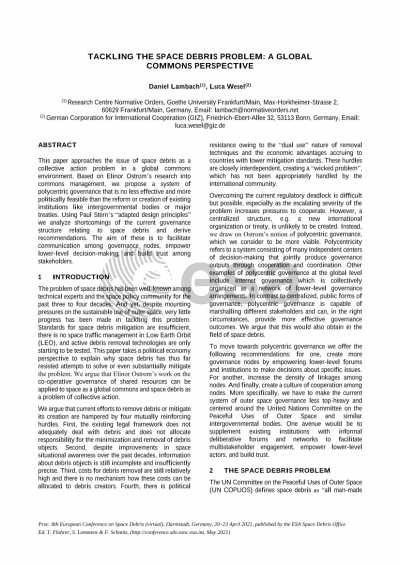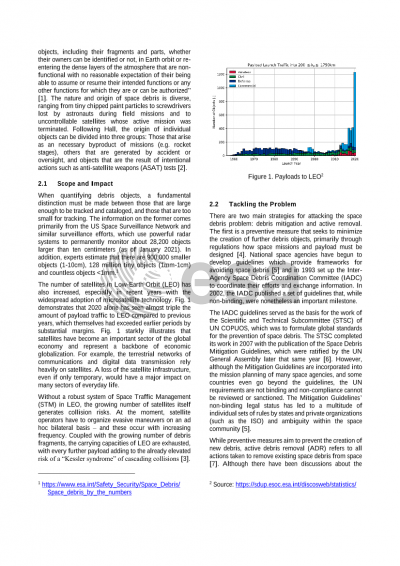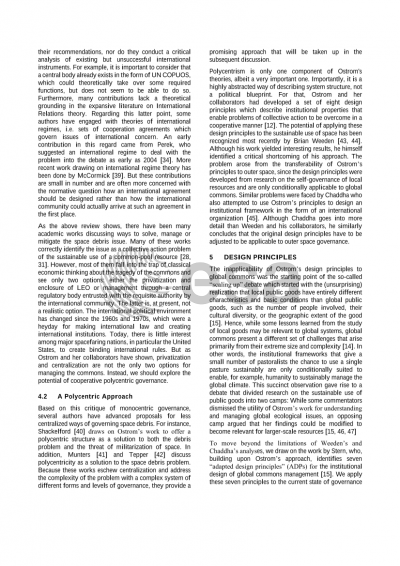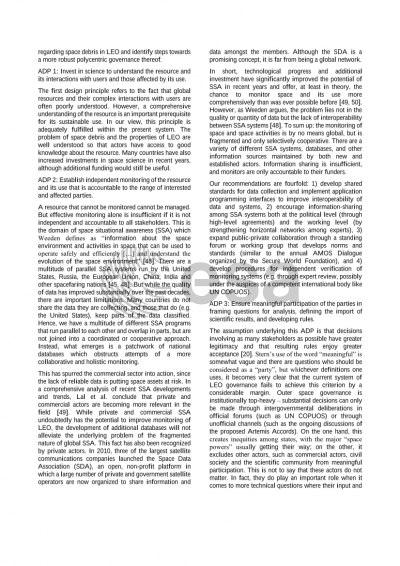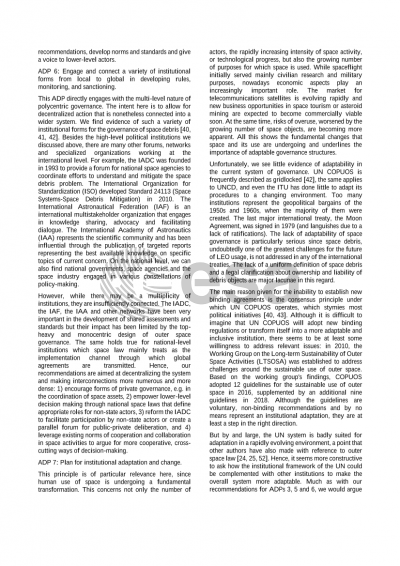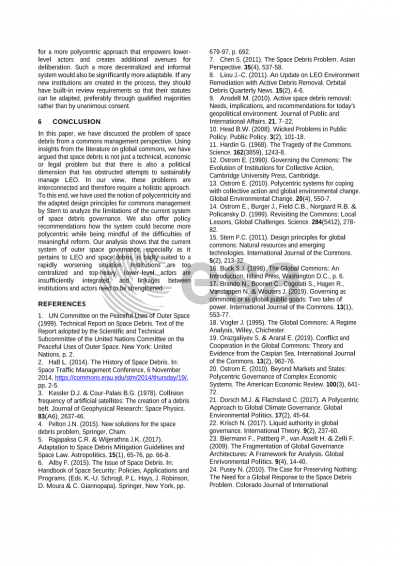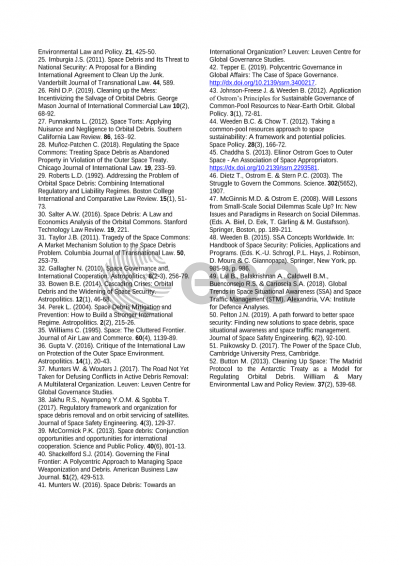Document details

Abstract
The problem of space debris has been well-known among technical experts and the policy community for the past three to four decades. And yet, despite mounting pressures on the sustainable use of outer space, very little progress has been made in tackling this problem. Standards for space debris mitigation are insufficient, there is no space traffic management in low earth orbit, and active debris removal technologies are only starting to be tested. This paper takes a political economy perspective to explain why space debris has thus far resisted attempts to solve or even substantially mitigate the problem. We argue that Elinor Ostrom’s work on the co-operative governance of shared resources can be applied to space as a global commons and space debris as a problem of collective action.
We argue that current efforts to remove debris or mitigate debris creation are hampered by four mutually reinforcing hurdles. First, the existing legal framework does not adequately deal with debris and does not allocate responsibility for the minimization and removal of debris objects. Second, despite improvements in space situational awareness over the past decades, information about debris objects is still incomplete and insufficiently precise. Third, costs for debris removal are still relatively high and there is no mechanism how these costs can be allocated to debris creators. Fourth, there is political resistance owing to the ‘dual use’ nature of removal techniques and the economic advantages accruing to countries with lower mitigation standards. These hurdles are closely interdependent, creating a ‘wicked problem’, which has not been appropriately handled by the international community.
Overcoming the current regulatory deadlock is difficult but possible, especially as the escalating severity of the problem increases pressures towards cooperation. However, a centralized structure, e.g. a new international organization or treaty, is unlikely to be created. Instead, we draw on Ostrom’s notion of polycentric, which we consider to be more viable. Polycentricity refers to a system consisting of many independent centers of decision-making that jointly produce governance outputs through cooperation and coordination. Other examples of polycentric governance at the global level include internet governance which is collectively organized as a network of lower-level governance arrangements. In contrast to centralized, public forms of governance, polycentric governance is capable of marshalling different stakeholders and can, in the right circumstances, provide more effective governance outcomes. We argue that this would also obtain in the field of space debris.
To move towards polycentric governance would require the following: for one, create more governance nodes by empowering lower-level forums and institutions to make decisions about specific issues. For another, increase the density of linkages among nodes. And finally, create a culture of cooperation among nodes. More specifically, this could involve intergovernmental discussions about global norms and treaty revisions, public-private deliberations in a variety of forums and formats to facilitate multistakeholder engagement, the development of norms around transparency and data-sharing in SSA, and a strengthening of informal forms of governance like ISO standard-setting.
Preview
